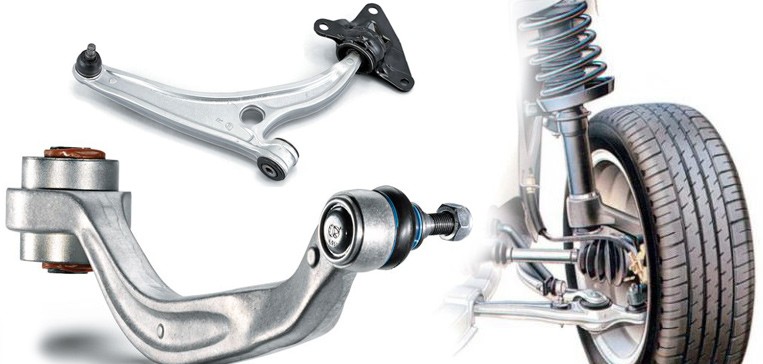
What does it mean if the car has a "wishbone" type suspension?
Designers of automotive suspension systems must consider many factors, including cost, suspension weight and compactness, as well as the handling characteristics they want to achieve. No design is perfect for all of these goals, but a few basic design types have stood the test of time:
- Double wishbone, also known as A-arm
- Macpherson
- Multichannel
- Swing arm or trailing arm
- Rotary axis
- Solid axle (also called live axle) designs, usually with leaf springs.
All of the above designs are independent suspension systems, which means that each wheel can move independently of the others, with the exception of the solid axle design.
Double wishbone suspension
One suspension design that is common on high performance vehicles is the double wishbone. In double wishbone suspension, each wheel is attached to the vehicle by two wishbones (also known as A-arms). These two control arms are roughly triangular in shape, giving the suspension the names "A-arm" and "double wishbone" due to this shape. The wheel assembly is attached to each control arm at what would be the top of the A formed by each control arm (although the arms are usually roughly parallel to the ground, so this "top" is not really on top); each control arm is attached to the vehicle's frame at the base of the A. When the wheel is raised and lowered (due to bumps or body roll, for example), each control arm pivots on two bushings or ball joints at its base; there is also a bushing or ball joint where each arm attaches to the wheel assembly.
What is wishbone suspension used for?
A typical double wishbone suspension has control arms that are slightly different lengths, and often their angles when the vehicle is at rest are also different. By carefully choosing the ratio between the lengths and angles of the upper and lower arms, automotive engineers can change the ride and handling of the vehicle. It is possible, for example, to adjust the double wishbone suspension so that the car maintains approximately the correct camber (inward or outward tilt of the wheel) even when the wheel is driven over bumps or the car leans into a corner. hard turn; no other common type of suspension can keep the wheels at the right angle to the road as well, and so this suspension design is common on high performance cars like Ferraris and sports sedans like the Acura RLX. The double wishbone design is also the suspension of choice for open wheel racing cars such as those raced in Formula 1 or Indianapolis; on many of these vehicles, the control levers are clearly visible as they extend from the body to the wheel assembly.
Unfortunately, the double wishbone design takes up more space than some other types of suspension and is difficult to adapt to a front-wheel drive vehicle, so it won't fit every car or truck. Even some cars designed for good high-speed handling, such as the Porsche 911 and most BMW sedans, use designs other than double wishbones, and some sports cars, such as the Alfa Romeo GTV6, only use double wishbones on one pair. transverse levers. wheels.
One terminology issue to note is that some other suspension systems, such as MacPherson strut suspension, are single-arm; this arm is sometimes also referred to as a wishbone and so the suspension can be thought of as a "wishbone" system, but most people who use the term "wishbone" are referring to a double wishbone setup.

